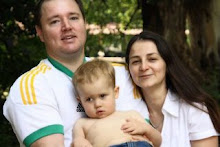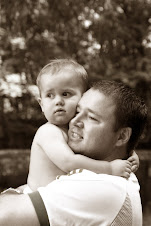LIVING WITH A CHILD WITH AUTISM
Raising a child with autism is one of the hardest things a parent will ever have to do. It places a tremendous physical and emotional strain on the person caring for the child, and often contributes to marital problems, problems with other children, and job instability. Unfortunately, there are no reliable treatments for autism, and the responsibility for managing the developmental and behavioral problems of the autistic child falls largely on the family. Although there is nothing that we can do to change the underlying problem, there are things which family members can do to reduce the level of abnormal behavior and increase the child's ability to cope.©
1. Look for triggering problems or warning signs that precede major behavioral outbursts. Once you can identify warning signs, you may be able to modify the situation to prevent an outburst. For many children, an outburst or tantrum is their only method of communicating a need or distress. Other children may be quite helpful in figuring out the message of a tantrum and the warning signs.
2. Develop a consistent structure and routine. Autistic individuals thrive best in an environment where things are predictable, and typically have great difficulty with unexpected change and lack of structure. Have a schedule which your child follows every day, and do things in the same way. Some children can cope with a loose time schedule and a review of the events of the day each morning. Others will need to be scheduled right down to the order of putting on clothing.
3. Prepare your child for changes in routine. For some children this will require only a reminder of the next event: "First dinner, then bath". For others, the use of a photo, or communication board picture can help with the transition. For example, "We are going to McDonalds" and point to a picture of McDonalds or a hamburger.
4. Do not equate talking with communication. Children who do not speak can learn to communicate their needs. This may be accomplished by the use of objects, gestures, pointing to pictures, or using sign language. Using these techniques is a normal developmental step toward talking, and does not interfere with learning to speak. Remember that talking, for children with autism, is not necessarily communicating. For many it is meaningless verbal output. For others, it communicates accurately at times, but not at others. If your child does talk, make sure your understanding of what he is saying is what he really intended to convey. Sometimes it is helpful for the adult to help by giving the child an opportunity to indicate what he wants by offering choices. For example, "Do you want to watch TV or listen to your tape?"
5. Learn to live with some perseverative or stereotypic behavior. When your child is in public, you want to train him to behave as well as possible, but at home, he should have opportunity to just "be himself." Many self-stimulatory and perseverative behaviors, including verbal perseverations seem to serve a reassuring or anxiety binding function.
Consequently, while it may seem advisable to try to extinguish some of the more bizarre behaviors, it is extremely difficult to eliminate stereotypy entirely. Extinguished behaviors are typically quickly replaced by another self-stimulatory or perseverative behavior. The new behavior may or may not be more tolerable than the initial behavior, and programs to extinguish these behaviors must carefully consider the possible consequences. Diminishing the frequency or limiting the expression of autistic behavior to certain times and places are the most reasonable goals. These are best accomplished by some disregarding, redirecting, or providing another task to focus on.
Substitution or training a variation in some bizarre behaviors can be successful and help the child to appear less different in the school or community. This involves intense adult intervention and requires identification of equally reinforcing substitute behaviors. Any behavior to be changed will need to be replaced with a behavior that is at least as pleasurable to the child.
6. Get support for yourself. The burden of raising a child with autism can be lightened by family, friends, community agencies, and others who have shared similar experiences. The Autism Society of America provides an opportunity for families to get together and to receive up to date information on treatments and services for autistic individuals and their families. Regional Center may provide respite care, medical referrals, a behavior specialist to help with behavior management, or placement options. The Autism Research Institute publishes a quarterly newsletter, the Autism Research Review International which provides useful information on current research and treatment trends in autism.
7. Work together with your school. An autistic child's curriculum requires a major focus on self care and community skills. Deciding what each child needs to learn in school will depend on the unique features of each child, his level of intelligence, family setting, and his need to access the community. The family and school should decide together on the critical skills each child needs to develop, and then work together to train the child to use these skills in a real life setting. Remember, a child's ability to read and do math will only benefit him in the long run if he can use them in real life settings, and can also take care of his basic needs at home, and behave appropriately in the community.
8. Protect your child from aggressive role models as much as possible. Children with autism often copy behaviors without understanding why the person did them-called echopraxia. This is similar to the echolalia (echoing of words or phrases) many children engage in. Both forms of echoing may occur immediately, or in a delayed fashion. Children who are spanked or hit are more likely to hit others. Those who observe violent behavior at home, school or in the community, as well as in movies or cartoons, may also imitate it inappropriately. Deciding which TV shows it is appropriate for an autistic child to watch requires considerable adult insight and the cooperation of all family members, including siblings.
9. Do not expect your child to tolerate new people or group situations. If your child must be with a group, allow him a large personal space, and opportunity for escape.
10. Beware of irritating sensations. Many individuals with autism are hypersensitive to certain sounds, lighting conditions, skin sensation, taste, texture or temperature. Many children also have an aversion to certain colors. The exact form of these hypersensitivities tends to vary over time, but most children require some adult recognition of the problem, and accommodations to limit the child's exposure to them. A variety of programs to desensitize children to touch and sound sensitivities are being researched, and may offer hope for children in the future.
J:\handout\LIVING.AUT (61) August 13, 1998
Subscribe to:
Post Comments (Atom)


.jpg)

















1 comment:
Hi
At some point if you have not already done so, and I urge you to at last give it a try you might want to learn and practice some Yoga.
It has bee shown that Yoga can be an effective in helping to treat Autism, it is also very good for calm in the life of the parents and children with Autism.
With such a wide and varied number of yoga types you of course need to know which is best suited for Autism and other related Neural disorders.
If this is of any interest you can find out more at www.autisinformatioservicom
Good Luck and keep up the excellent blog
Lisa
Post a Comment